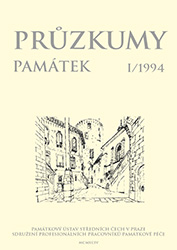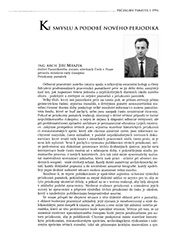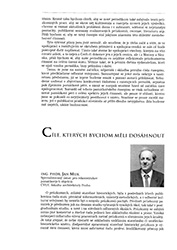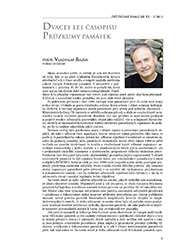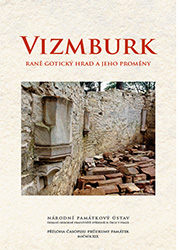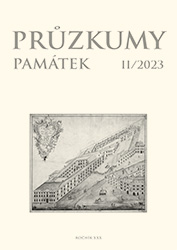History of the Journal
The journal has been published continuously since 1994, releasing two issues each year, by an institution that is today known as the National Heritage Institute, Regional Office of Central Bohemia (the name of the publishing institution has changed several times). During the years 1994–2010, the journal was co-published by the Association of Conservation Professionals. Vladislav Razím was the editor-in-chief between 1994 and 2022; in 2023, Jan Kypta assumed his position.
Since its beginning, the journal has served as the main platform to publish detailed research of historical buildings in the Czech Republic. The chronological range is not limited in any way; the results of research of architectural monuments from the Romanesque period to modern times are published on a regular basis. In addition to architectural research, the journal focuses on associated monuments, especially from the sphere of mural art and sculpture. Emphasis is placed on interdisciplinary overlaps. The journal provides space to release extensive studies based on the collaboration among historical disciplines (archaeology, building history, art history, history, archival science). The results of collaboration between humanistic researchers and restorers and natural scientists are regularly published as well. Hence, the contents of the journal issues are quite varied. The journal covers the entire territory of the Czech Republic and adjacent regions. It reflects the research of all kinds of architectural monuments, from vernacular architecture to monumental churches and elite residences.
Throughout its existence, the journal has accepted articles not only dealing with technical and technological aspects of historical building, but also with the artistic character of various architectural periods. There is also a substantial number of articles describing the social context of the construction of profane and sacral structures. The editorial board has always consisted of a well-proportioned team of art historians, architectural historians, and archaeologists in order to retain the journal’s quality in relation to the wide scope of themes it covers. The members of the editorial board are regarded as prominent connoisseurs in the field, in their thematic and chronologic specialisations. They come from the academic sphere as well as the conservation milieu. Thus, a balance between theoretical and terrain research is guaranteed.
The journal publishes extensive studies introducing specific structures and artworks as well as groups of monuments. The Materials column chiefly publishes research reports based on current research activity. Polemic texts are found in the Discussion column. Furthermore, the journal seeks to reflect Czech and foreign literature. Therefore, in addition to standard reviews, a detailed bibliography that corresponds with the wide thematic range of the journal is annually published.
The large format of the journal as well as its graphic design meets the demands to publish a high-quality drawing and photographic documentation and its corresponding amount of material. The A4 format, which the journal has had since its foundation, facilitates the reproduction of contemporary building plans and historical picture sources in a wider scale. The graphic design has gone through only a few changes since the journal’s foundation. In addition to the regularly published issues, four supplements have been released that were dedicated to specific structures, or rather conceived as catalogues of selected monuments.



